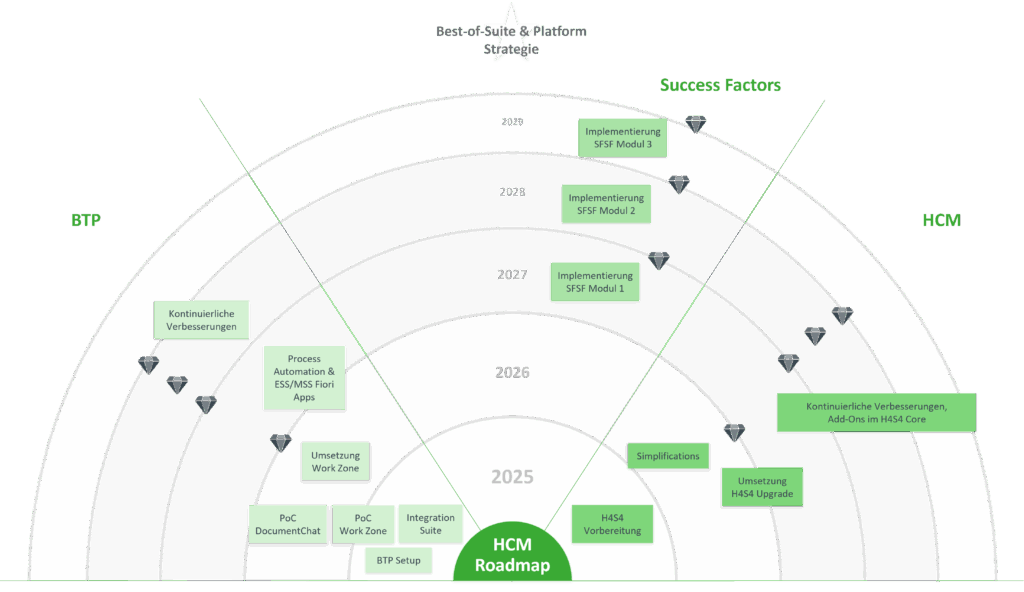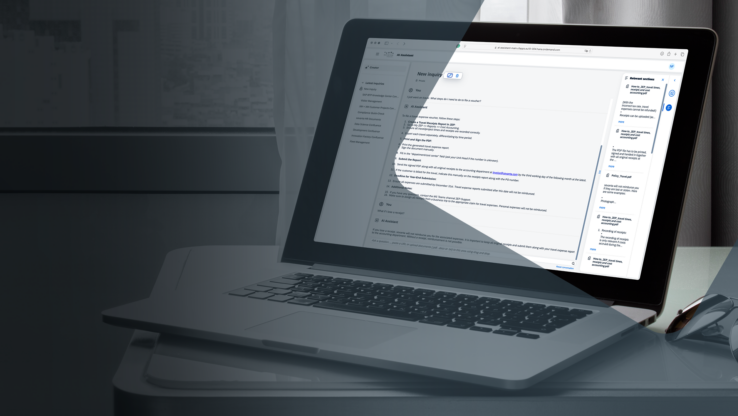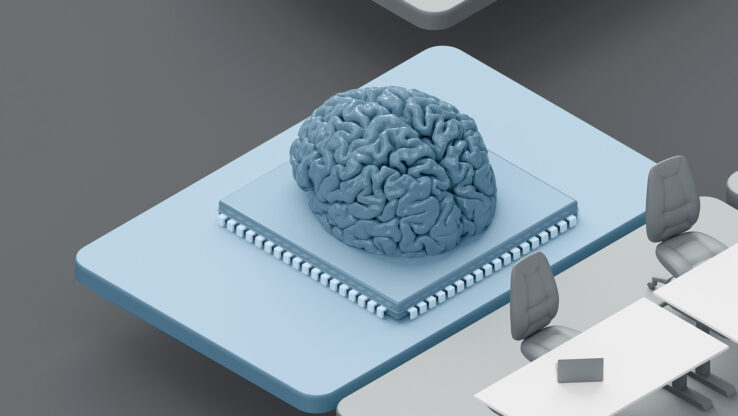
HCM in Transition: Balancing Stability and Innovation
Few areas are evolving as rapidly as Human Resources. But why is that? What are the key drivers behind this shift? How far along is the transformation in HR – and what role does AI play in all of it? Michael Kern, COO at sovanta and long-time HCM expert, explores these questions in his latest blog post. With a strategic look at the HCM landscape beyond 2025, he offers a clear perspective on where things stand – and where they’re heading.
One date in particular is forcing many companies to act: December 31, 2027. That’s when standard maintenance for SAP ECC ends. For organizations looking to avoid the high costs of extended maintenance, the time to start transforming is now. It’s no surprise that many are currently rethinking their HCM roadmap for the next 5 to 10 years. High on the priority list: Artificial Intelligence. But also in focus are modern self-service portals, cloud-based solutions, HR analytics, and automation – all aimed at improving employee productivity and simplifying how people interact with HR. To be future-ready, HR IT landscapes must stand on modern technological foundations. But how do we get there?
The Goal: HR Transformation
Anyone looking to drive real HR transformation needs to think bigger. It’s no longer just about upgrading to S/4HANA – that’s simply a matter of execution. More and more companies are choosing a fundamental realignment of their HR processes, with the cloud becoming the target architecture for many HR areas. But this also brings key decisions to the table: Private or public cloud? Which HR applications fit which scenario? And how do you effectively manage a hybrid HR IT landscape? A proven first step is to take a strategic, high-level look at your existing tool landscape – to create a clear big picture. After all, every company faces unique challenges in HR that require tailored solutions.
How Fragmented HR IT Landscapes Really Are
When we support companies on their journey to SAP H4S4, we always start with an assessment: “What does the current HR IT landscape actually look like?”. And one thing quickly becomes clear – uniform system landscape are rare. Instead, we typically see Best-of-Breed landscapes: SAP as the core system, complemented by select SAP SuccessFactors modules and various third-party (non-SAP) solutions. In many cases, tool decisions were driven by individual departments over time, resulting in a complex and fragmented IT environment. And with the growing demands around AI and automation, things are only getting more complex – not simpler.
This complexity first needs to be managed. Different tools require different expertise. You need tool specialists to operate and support each technology – and those specialists are increasingly hard to find. Add to that the number of vendors involved. More tools mean more contracts, more coordination, and more administrative overhead. And on top of all that, HR is expected to drive innovation? From our experience, that’s simply not realistic. That’s why we help our customers develop a target vision for their HR tool landscape: one that is as homogeneous as possible and follows a SAP Best-of-Suite and platform strategy. The goal: fewer vendors, fewer technologies – while still ensuring full functionality through modern tools and rock-solid HR core processes.
The HCM Roadmap: A Guiding Path Toward the North Star
A well-designed HCM roadmap outlines the path toward a unified, future-ready HR IT landscape – step by step over the coming years. We call this target vision the “North Star”, as it serves as the guiding point for all strategic decisions. In collaboration with sovanta, SAP plays a central role – because it offers all key technologies from a single provider: from artificial intelligence and self-service portals to digital assistants. For custom extensions, the SAP BTP provides the ideal foundation. With sovanta, companies benefit not only from deep SAP HCM expertise, but also from our dedicated BTP Squad, delivering tailored solutions with speed and precision.

In three workstreams, our experts collaborate closely with our customers to move toward the North Star.
H4S4 – How Do We Safely Bring Core Systems into the S/4 World?
What remains on-premise, and what moves to the private cloud? In the areas of payroll and time management, many organizations choose to stick with proven tools. HCM systems already cover complex legal and social security requirements reliably – and this stability should be maintained in any new HR IT landscape.
SAP SuccessFactors – Which HR Processes Benefit Most from the Public Cloud?
Which SuccessFactors modules are the right fit? And how can the cloud standard be adapted to meet specific business needs? When it comes to recruiting, onboarding, talent & performance management, learning, goal setting, and core HR data, many companies rely on SAP SuccessFactors. This allows them to leverage modern cloud processes and benefit from embedded AI through Joule – for example, with CV matching or automated question generation for interviews. SuccessFactors is also a great starting point for launching simple, cloud-based HR projects. A favorite among our customers: SAP SuccessFactors Recruiting Marketing & Management – a powerful way to create a modern candidate experience in full corporate look & feel, significantly easing the HR team’s workload. See it in action: Allianz Career Portal.
BTP & Portals – What Does a Smart Entry into the Modern HR World Look Like?
How do you efficiently build extensions, integrate both SAP and non-SAP systems, and enable data-driven HR? SAP BTP provides a robust foundation for enhancing HR capabilities – whether through custom developments or leveraging prebuilt HCM standard scenarios. SuccessFactors extensions are very popular among our customers. Additionally, the SAP Build Work Zone as a central HR portal, along with the SAP Integration Suite for seamless system integration, contribute to a modern HR setup. All of this takes place within the SAP ecosystem, ensuring a consistent user experience thanks to SAP Fiori. And of course, Joule is available as a digital assistant – answering questions and initiating processes automatically. When Joule reaches system boundaries, the sovanta GenAI DocumentChat takes over – enabling smooth access to information, even beyond the SAP cloud environment.
SAP Business Data Cloud now provides a powerful data layer within the SAP ecosystem. Bringing together key components like SAP Datasphere, SAP Analytics Cloud (SAC), and SAP Databricks, the BDC forms a comprehensive platform for data management, dashboarding, and AI-driven applications. Enhanced by Intelligent Applications and SAP Data Products, SAP now offers preconfigured, cross-compatible analytics solutions – including dedicated use cases for HR.
Our Conclusion: Roll up your sleeves and get started!
Stability and innovation – at the same time? Yes, it’s absolutely possible. We’ve already helped many organizations move successfully in this direction. The coming years will be critical for HR, and there’s no reason to delay. The tools are in place: a stable SAP core combined with an outstanding employee experience that directly enhances employer attractiveness. Because the talent shortage is still a pressing issue – and companies can no longer afford to rely solely on external channels like websites and social media to impress candidates.
One thing is key: many HR services aren’t used daily. That makes intuitive system usability essential. To reliably capture user feedback, experience management should be part of your strategy. From our perspective, the three main levers for a future-ready HR IT landscape are: User Experience (UX), Integration, and Artificial Intelligence (AI). Are you set up for success in these areas? Let’s take a closer look at your HR IT landscape, reduce complexity, and launch the first projects on the path to your organization’s personal North Star.




